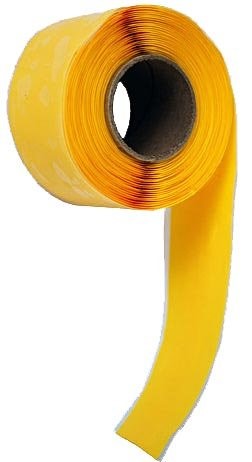How To Stop A Boat From Sinking
Great article By Michael Vatalaro for BOATUS
Quick action — and these three items — can keep your boat afloat in an emergency.
Putting Archimedes' "Eureka!" moment aside, a boat can be said to float because there's more water on the outside than on the inside. And while the concept of displacement might baffle some of us, it's a safe bet that every boater knows when the water on the outside starts becoming water on the inside, something has to be done, and quickly. Here are three ways to stop a sudden leak, before your boat ends up looking more like Archimedes' bathtub.
Cram It: TruPlug 
Designed as a replacement for traditional wooden bungs, which often need to be hammered into place to staunch the flow of water, TruPlug is made from closed-cell foam, the elastic type that springs back into shape after you compress it. Like foam earplugs, TruPlug is designed to be installed by hand.
Yes, in a perfect world, should a hose pop off your raw-water intake, you'd just close the seacock. But in reality, these valves are frequently neglected and stuck in the open position. Or perhaps, in a truly disastrous turn of events, a heavy battery or piece of equipment breaks loose and shears off an aged, corroded, or fatigued seacock. In such a case, you'd be glad to have the flexibility of TruPlug's foam, which can conform to somewhat irregular shapes.
But you don't have to imagine a worst-case scenario to find a reason to keep this $20 item in your toolkit. The plastic "mushroom"-style thru-hulls through which scuppers, bilge pumps, and livewells drain overboard are notorious for cracking and leaking after years of UV abuse. Having a plug handy to jam into one of these openings might just get you back to the dock without having to bail all the way home.
Wrap It: Rescue Tape

I've had an engine-cooling hose burst while underway. It's not pretty. When I opened the engine-compartment hatch, water — under pressure from the engine's circulating pump — was spraying from a gash in the hose all over the engine compartment. The boat in question was a twin-engine cabin cruiser, so the solution was to shut down the port engine and continue on one engine. But if I'd had Rescue Tape aboard, I could've wrapped up the busted hose and been back underway at normal speed.
Rescue tape is self-amalgamating silicone. It comes with clear backing that you have to peel back as you go. To repair a leak, stretch and wrap the tape over the hose and itself, overlapping each wrap by about half. Don't be shy on the stretching — the tighter you pull the wraps, the better the seal. Using the tape to cover an extra few inches on either side of the leak should allow you to seal just about any leaking hose or pipe in an emergency, even high-pressure hydraulic lines. However do read the packaging for limitations, such as for common rail pipes or pipes from injector pumps to injectors. For $10 to $12 per roll, this tape is cheap insurance.
Mend It: Epoxy Sticks
These epoxy putties can be mixed by hand to create a self-hardening patch for repairing small holes or gashes in the hull or an outdrive. They even cure underwater, though you may have to hold it in place for 5 to 10 minutes to give it time to set up. It's easier to find uses for this type of repair tool when your boat is out of the water. But if your boating takes you to remote places or you value self-reliance, throw a $24 package of this in the toolbox, just in case.